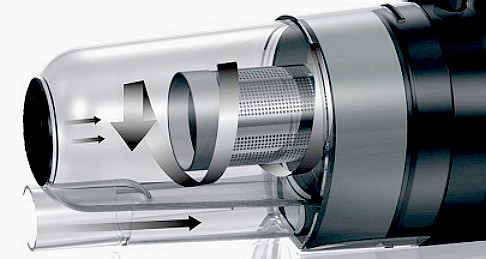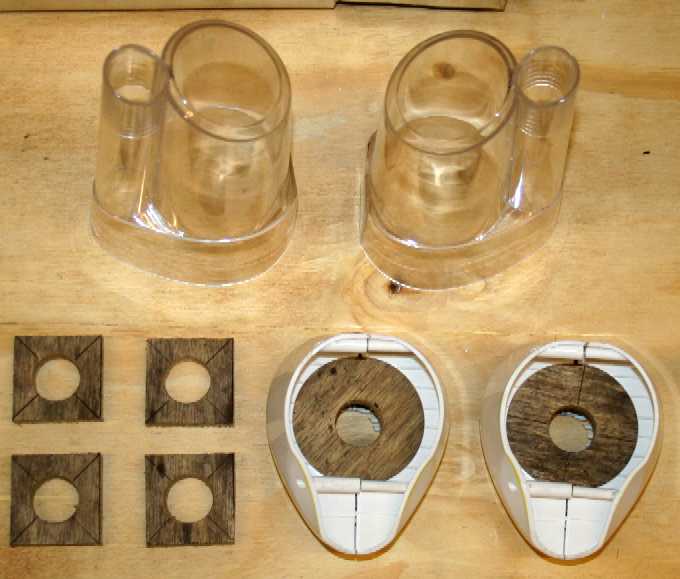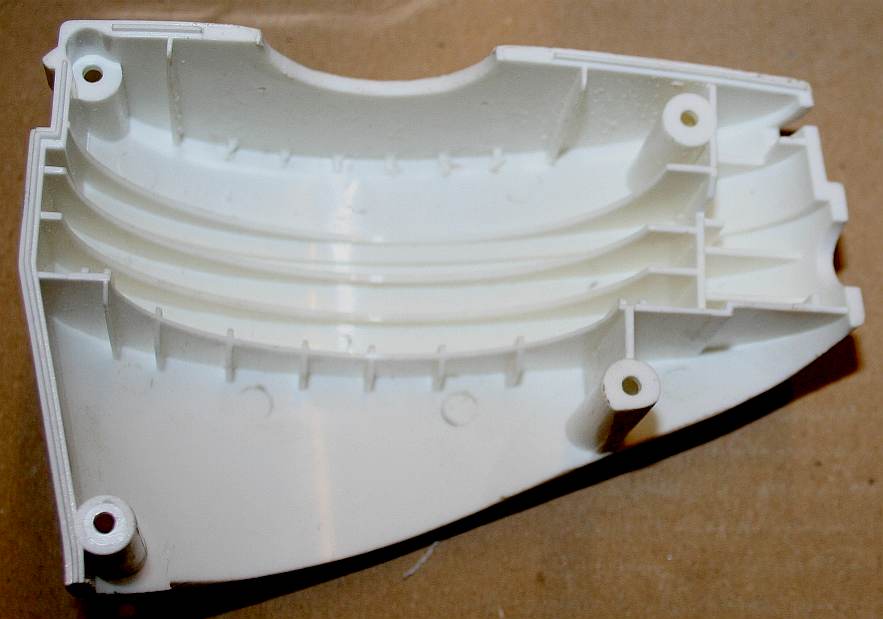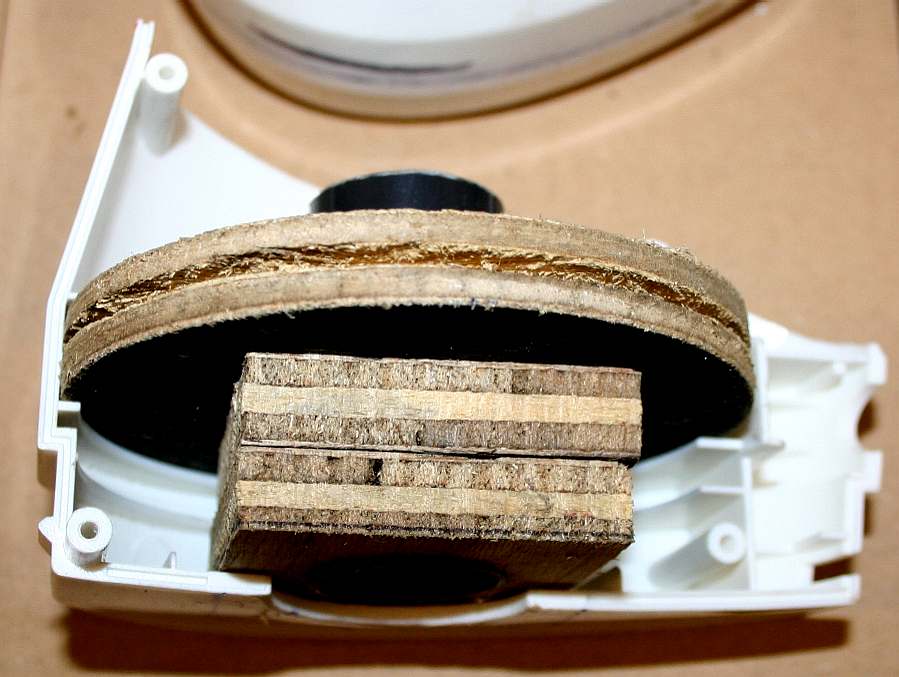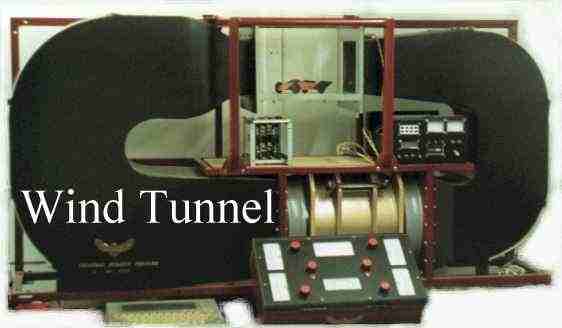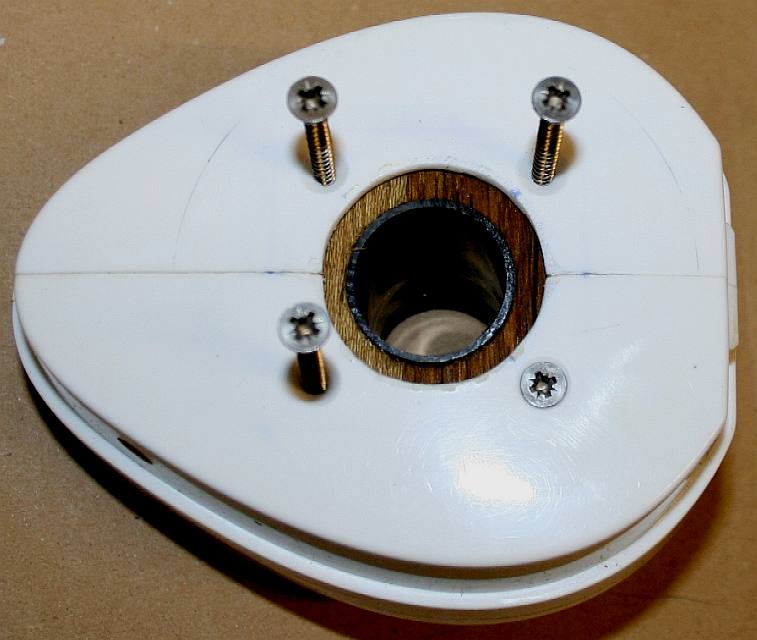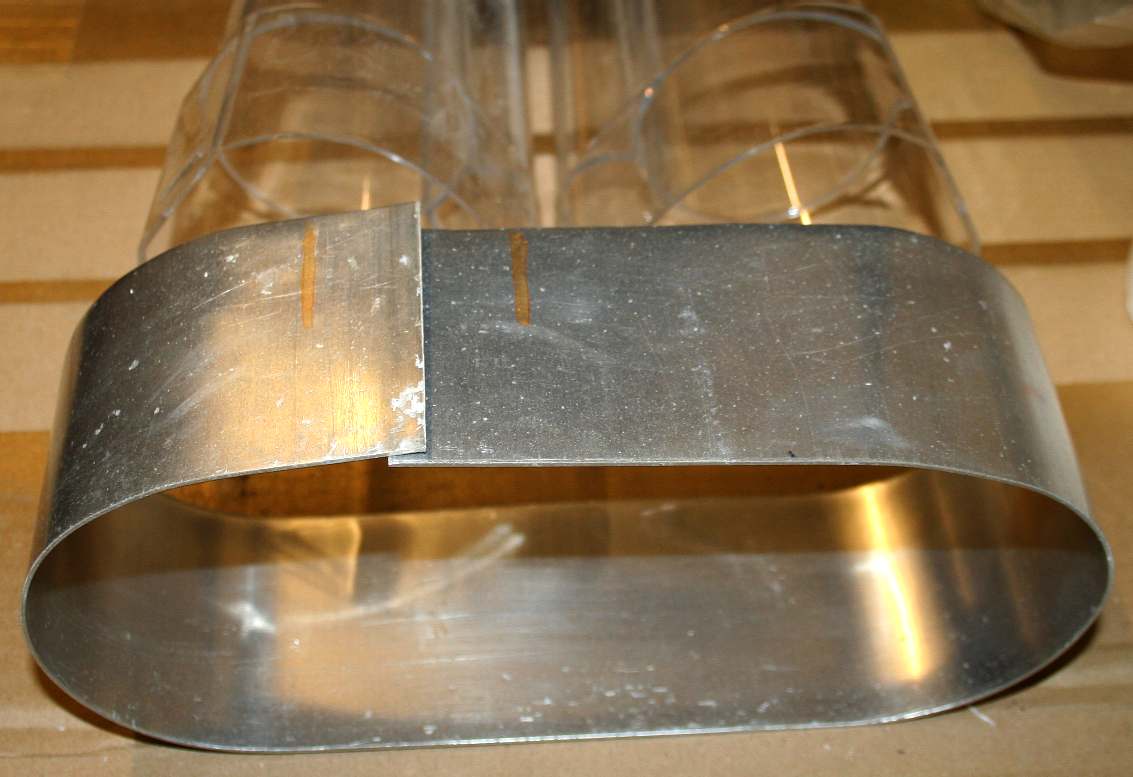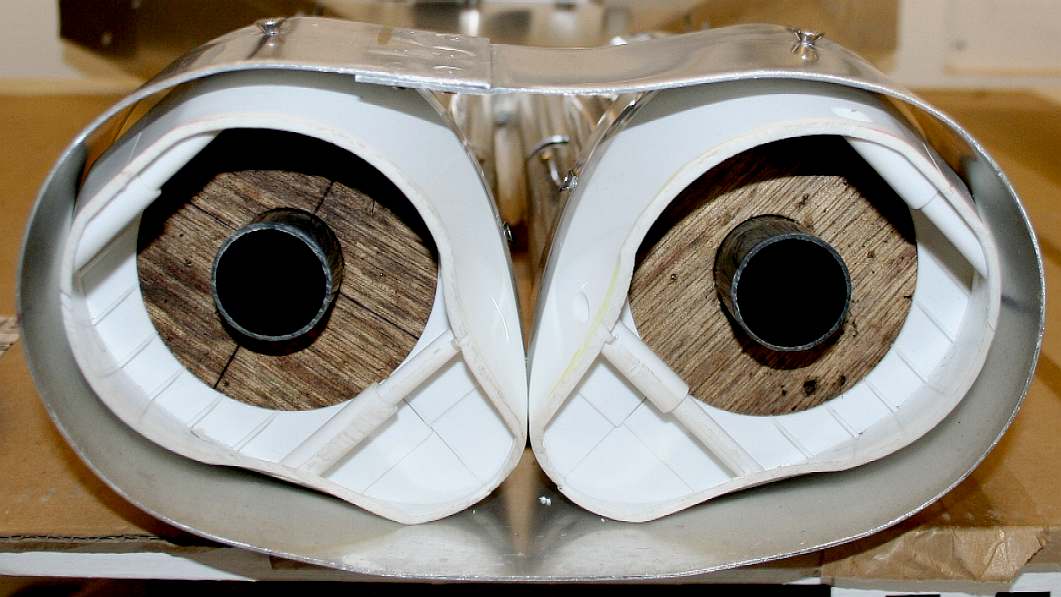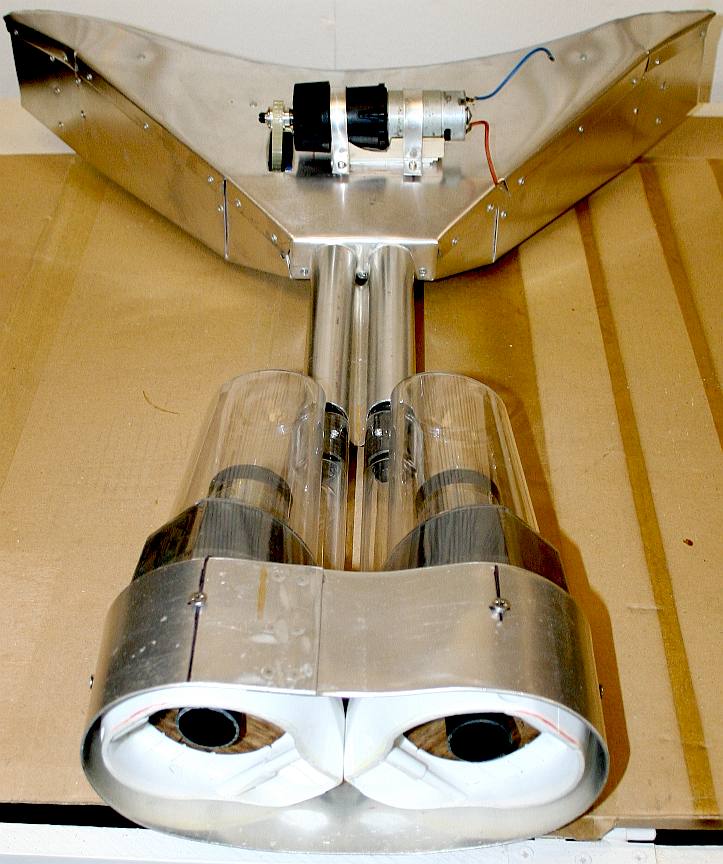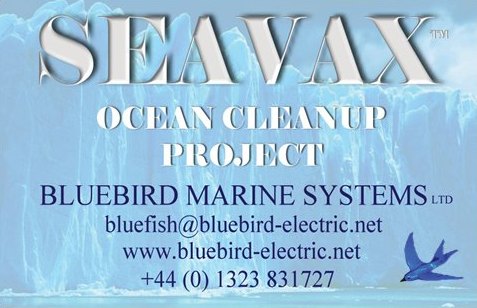|
SEAVAX™ - CYCLONIC FILTRATION MODEL BOAT TEST-BED
|
|
|
The "Enterprise MK1," is a 1:20 scale fully functional model of the proposed autonomous, solar powered (small) ship called SeaVax. SeaVax is designed to vacuum up plastic from the sea using a combination of filters, to include cyclonic chambers, in series with other waste treatments. Stages of filtration may be dialed in selectively to reduce the energy needed for water handling. We are not showing the other stages on this page to preserve a patent application.
This chamber is derived from an economy handheld bag-less vacuum cleaner. We ordered one to experiment with on 15-1-15. It will need some modifications, but should then work to clean a patch of water of plastic waste, when used in combination with other components (some of which are not shown on this page) to form a complete system.
HYDRO CYCLONIC FILTRATION
A hydro-cylcone is a chamber that spins water so that solid particles collect at one end. We have sourced a cyclonic chamber to be able to simulate filtration at sea. Whereas most cyclonic chambers are vertical, the unit we've found also works well horizontally. A three stage in line filtration system is shown. We will not be using the 2nd and 3rd stage filter meshes - and please don't confuse these stages with the methods to be incorporated on the full size ship that will ensure no large animals (fish and mammals) get caught up accidentally. Any animal caught in netting and ropes will be cut loose and freed. How? You'll have to wait for the full size ship to find out. You have to appreciate that without protecting our know-how we will never achieve funding. Because this is the first thing that any kind of backer wants to see.
We will be experimenting with meshes to suit our medium. The only difference between a cyclonic and a hydro-cyclonic chamber is the fluid medium. Water is incompressible, it therefore has different flow characteristics to Air that is compressible. Apart from that, the densities are miles apart. Hence, a wing in water (a hydrofoil) is much thinner and smaller for the same lift capacity, and that is why aircraft have such big wings, but hydrofoil boats have thin wing sections. Two of the first experimenters to use a controlled airflow in a tunnel to measure the lift coefficient of different wing profiles, were the Wright Brothers.
The filtration stages in a small hand-held vacuum cleaner is still an exacting business, in this case consuming 600 watts to clean carpets, etc. These stages are not suitable for our purposes.
WATERS V AIR
Water has a density of 1000 kg/m^3. If you had a meter cubed of (pure) water it would weight exactly 1000 kg, or a metric ton. Hence, one kg = one liter. Air that is near sea level has a density that averages 1.275 kg/m^3. If you have a balloon containing a meter cubed of sea level air, the air itself would weight 1.275 kg. To find how much more dense water is than air all we need to do is divide 1000 kg/m^3 by 1.275 kg/m^3 yields 784. Thus, at sea level, air is 784 times less dense than water.
One of the ancient inventors who struggled to find a way to express density was Archimedes, from where the expression "Eureka" was made famous. He realized that when an object with a volume of one litre was placed in water, it displaced 1 kilogram. No matter what the object was made of. E.g., one liter of lead would weight more than a kilogram, 11.3 kilograms in fact, so would sink in water very fast. One liter in volume of wood weighs less than water, about 0.42 kilograms for a softwood, so floats. Handy to know, when designing boats.
COMPONENTS - These are the vacuum cleaning (hydro) cyclonic heads. We've had to modify the base with wooden inserts that have been reamed to accept our plastic vacuum tubes. The marine ply has been treated against rot and will be epoxy bonded to form a 30mm thick sandwich, that is both bolted and bonded in place, so sealed. The dual cyclonic heads will be fitted into an aluminium housing, or frame, that pivots inside the forward facing brackets on the rear hull, so that the sweep head operating height can be adjusted. A modified system might be useful for tackling oil spills.
COMPUTER AUTOMATED MACHINE CONTROL
We can't say much about this aspect of the research because of IP restrictions. Suffice to say that the full size craft must be capable of extracting plastic of different sizes from seawater. In order to achieve this a robot ship needs a high level of automation, of necessity, requiring robotic computer controls.
MODIFICATIONS - Here we see one half of the plastic body of a vacuum unit that has been drastically cut down. The forward end ribs have been removed and the main plywood insert recessed on the central ply to fit exactly between the circular ribs for a solid assembly. A plastic tube is inserted into the reamed plywood parts. The end facing into the hydro-cyclonic chamber is flush with a slight chamfer so that filtered water can exit more easily.
FLUID DYNAMICS - To fully develop a larger waste water treatment system we'll be using a mixture of computational flow models and real water flow visualization and measurement apparatus. The above is a picture of a small scale wind tunnel that we use for various experiments when measuring air flow. Wouldn't we like to build such a system to observe water flow. The originator of the above system has been retained for just such a design exercise, if that proves to be necessary, though we now have contact with several universities and companies who offer similar services. In house control is sometimes preferred to speed up development and to maintain absolute privacy.
HYDRO CYCLONE BODY - The two halves of each chamber body are bonded together with a rubberized adhesive and then screwed together with four side screws as per those seen in the halves above, and then another four stainless steel screws as seen above that pull the plywood sections together.
ALUMINIUM FRAME - A strip on aluminium is cut, marked and folded roughly to shape. This shroud forms a frame into which the irregular shaped plastic vacuum bodies may be secured.
SHROUDED - As you can see from the above picture, the aluminium shroud has been shaped to hold the two hydro cyclone chambers back to back. The aluminium has been joined with six countersunk pop-rivets and the vacuum units screwed into place.
ASSEMBLY - The cyclonic chambers are now joined with an aluminium frame or hood. This whole unit hinges on the rear at the forward end of the aft treatment/storage hull. The vacuum/shredder ocean cleaning head is submerged in the sea. For this reason the motor shown here will be replaced with a sealed DC brushless motor at some point in the testing schedule.
LINKS
vafusa hydrocyclone separators Vortex depollution products shredders pet bottle perforator http://www.forbes.com/ http://en.nioc.ir/ http://www.saudiaramco.com/ http://www.shell.com/ http://www.rosneft.com/ http://www.exxonmobil.com/ http://www.gazprom.com/ http://www.petrochina.com.cn/ http://www.pemex.com/ http://www.chevron.com/ https://www.kpc.com.kw/ http://www.petrobras.com.br/ http://www.total.com/ https://www.qp.com.qa/ http://www.adnoc.ae/ http://www.bp.com/ http://www.lukoil.com/ http://www.statoil.com/ http://www.pdvsa.com/ http://www.nrc.oil.gov.iq/ http://www.sonatrach.com/ http://www.vortexdepollution.com/products/shredders/shredders/pet32-perforator http://www.forrec.eu/dual-shaft-shredders http://www.machinerydata.com/PlasticLumber.htm http://www.ksb.com/giw-en/ http://www.hydrocyclone.com/ http://en.wikipedia.org/wiki/Hydrocyclone https://www.vafusa.com/hydrocyclone-separators.htm
Youtube
ACID OCEANS - ARCTIC - ATLANTIC - BALTIC - BERING - CARIBBEAN - CORAL - EAST CHINA - ENGLISH CH
GULF MEXICO - INDIAN - MEDITERRANEAN - NORTH SEA - PACIFIC - PERSIAN GULF - SEA JAPAN - STH CHINA
PLASTIC OCEANS - RISING SEA LEVELS
Our love affair with plastic is choking the oceans. Once people know about it, they want to stop it. But how? The next question is who? Obviously, if any of the researchers involved so far had come up with a solution, they would have sorted it years ago. We are a practical think-tank fresh to the issue and without a budget. We hope to be able to collaborate with other marine organisations that are funded for this work, or who have funds to investigate viable projects. You cannot donate to us directly on this site, but we hope to identify partner sites shortly where you can support a project much like that proposed herein, or better still, our own practical experiments. Volunteer careers.
BUSINESS PLAN - We will be trying other test rigs to increase operational flexibility, the aim being to make these vessels commercially viable. The hope is to sufficiently interest crowd funding investment to allow us to interest backers - hence kick start us. Once we have reached that stage, we may qualify for Horizon 2020 assistance as an SME, where blue growth is a European objective. There may be other initiatives that we will be looking at. This SeaVax vessel is Design Copyright © BMS Ltd, January 2015. All rights reserved.
OIL SPILLS - An oil spill cleanup version of this concept may also be an attractive proposition to oil companies, who may want to help us with development costs. The problem here is that there is only ever a market for such machines when there is a major spillage - and until the inevitable happens, most oil companies would not want to contribute to this R&D. According to Forbes the top 20 oil companies in 2015 are: Saudi Aramco, Gazprom, National Iranian Oil Co, Exxon Mobil, Rosneft, Royal Dutch Shell, Petro China, Pemex, Chevron, Kuwait Petroleum, BP, Total, Petrobras, Qatar Petroleum, ADNOC (Abu Dhabi), Lukoil, Iraqi Oil Ministry, Sonatrach (Algeria), Pdvsa (Venezuela) and Statoil (Norway).
|
|
|
This website is Copyright © 2015 Bluebird Marine Systems Ltd. The names Bluebird™, Bluefish™, SeaNet™, SeaVax™ and the blue bird and fish in flight logos are trademarks. CONTACTS The color blue is a protected feature of the trademarks.
|
